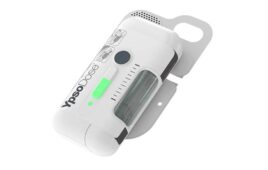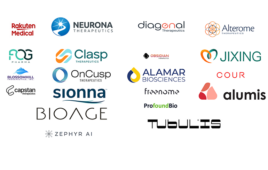Eli Lilly and Company has successfully engineered a single molecule that acts on two receptors in the body: GIP and GLP.
Earlier this month, the company released results from a phase 2b clinical trial of the dual receptor agonist molecule, revealing that the treatment shows meaningful blood sugar reduction and body weight loss in patients with type 2 diabetes, which is the most common type of diabetes, making up nearly 95 percent all diabetes cases in the U.S.1
Significant trial results were seen in just six months compared to Trulicity, a selective GLP-1 receptor agonist, results Brad Woodward, M.D., senior medical director at Lilly Diabetes, said “exceeded [the company’s] expectations.”
“The data, showing average blood sugar reductions of up to 2.4 percent points (HbA1c) and an average weight loss of up to 11.3 kg (12.5 percent), showed a robust dose response compared to placebo throughout the entire dose range of GIP/GLP-1 RA included in the study,” Woodward told Pharmaceutical Processing. “The two higher doses of GIP/GLP-1 RA—10 and 15 mg—provided the most significant reductions, helping up to 30 percent of people reach HbA1c targets of 5.7 percent, which is in the normal range for people without diabetes.”
Woodward also commented that the trial results are robust, and the Eli Lilly diabetes team is excited by the molecule’s potential benefits for people struggling with type 2 diabetes. “The robust blood glucose and weight reductions seen may lead to a new treatment option for patients and providers, who are always looking for innovative choices when making treatment decisions,” Woodward said.

The phase 2b study, a 26-week, randomized, placebo-controlled study, compared the effects of four doses—1 mg, 5 mg, 10 mg, and 15 mg—of the GIP and GLP-1 receptor agonist to dulaglutide 1.5 mg and placebo in type 2 diabetes patients. The 300 person study held the primary objective of evaluating whether GIP/GLP-1 RA, dosed once weekly, was superior to placebo in reducing HbA1c from baseline at 26 weeks. Some secondary objectives included reductions of body weight and waist circumference.
According to Woodward, these results are promising and the company is confident as it prepares to kick off Surpass, a phase III clinical trial program, later this year or early 2019. The phase III trial will further evaluate the dual GIP/GLP-1 receptor agonist’s potential as a next generation once-weekly incretin. Woodward commented that this study “could strengthen Lilly’s position in the first injectable space and provide meaningful innovation for the treatment of type 2 diabetes.”
The Surpass studies will evaluate three doses—5, 10, and 15 mg—and are expected to complete in late 2021.
Eli Lilly has had a dedicated diabetes team since 1923, and introduced the world’s first commercial insulin, Humulin, in 1982. Today, the company offers a wide range of diabetes resources from medicines and technologies to support programs, and more.
References
[1] Centers for Disease Control and Prevention. National Diabetes Statistics Report, 2017. Atlanta, GA: Centers for Disease Control and Prevention, U.S. Dept of Health and Human Services; 2017.Filed Under: Drug Discovery and Development



